Click on images to enlarge
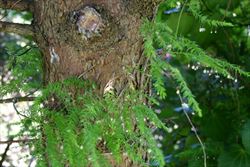
climbing habit (Photo: Trevor James)
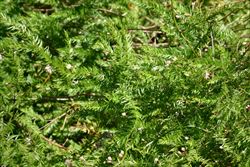
scrambling habit (Photo: Trevor James)
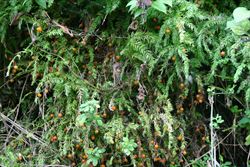
habit in fruit (Photo: Trevor James)
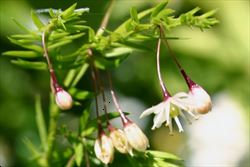
close-up of flowers and flower buds (Photo: Trevor James)
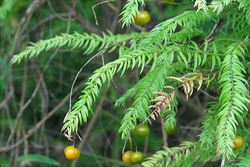
immature fruit (Photo: Jackie Miles and Max Campbell)
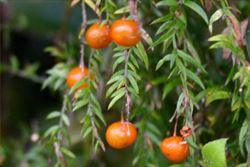
close-up of mature fruit (Photo: Trevor James)
Scientific Name
Asparagus scandens Thunb.
Synonyms
Myrsiphyllum scandens (Thunb.) Oberm.
Family
Asparagaceae (Queensland, New South Wales, the ACT and Western Australia)Liliaceae (Victoria, Tasmania, South Australia and the Northern Territory)
Common Names
asparagus fern, climbing asparagus, climbing fern, ferny asparagus, myrsiphyllum, snakefeather
Origin
Native to southern Africa (i.e. Cape Province in South Africa).
Naturalised Distribution
Widely naturalised in the coastal districts of southern Australia (i.e. in the coastal districts of central New South Wales, southern Victoria, Tasmania, south-eastern South Australia and south-western Western Australia).
Notes
This species has been widely grown as a garden ornamental in the southern parts of Australia. It has escaped cultivation and invaded urban bushland, open woodlands, coastal environs, rocky habitats and gardens. It is regarded as an environmental weed in Tasmania, Victoria, South Australia and New South Wales and was recently listed as a priority environmental weed in four Natural Resource Management regions.
Asparagus fern (Asparagus scandens) can smother shrubs and small trees and is seen as a potentially a serious environmental weed in southern Australia. It is an aggressive plant, producing underground tubers and forming dense impenetrable mats. It is a shade tolerant plant preferring moist sites and competes with native plants for nutrients, light and space. It is thought to have a much greater potential distribution than at present, and could seriously impact on Australia's biodiversity in the future if it is not managed correctly. On Flinders Island, north of Tasmania, it has invaded the edges of native vegetation and in Western Australia infestations have recently been found in peppermint and banksia woodlands. In South Australia infestations are present in several sites on the Fleurieu Peninsula and within a reserve near the town on Millicent in the south-east of the state. Larger infestations are also present in the Adelaide Hills (e.g. at Aldgate, Crafers, Stirling and Ironbank). In New South Wales it has been recorded in coastal reserves (e.g. at Narrawallee Beach in the Shoalhaven region), while in Victoria it is also invading remnant vegetation and conservation areas (e.g. Phillip Island Nature Park).
Asparagus fern (Asparagus scandens) is the most important and widespread of all the asparagus weeds in New Zealand, where it prevents the regeneration of native plants and strangles or smothers soft-barked plants and seedlings.

